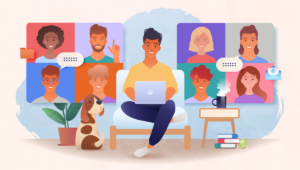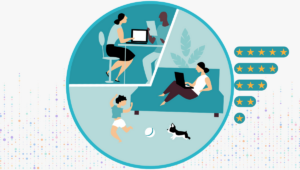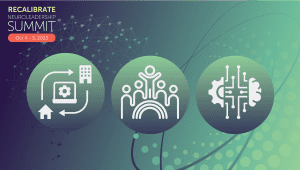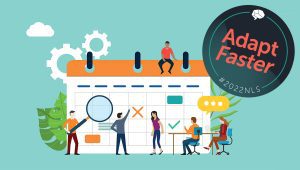
Transforming Feedback Through Neuroscience
When feedback feels safe and empowering, it becomes a tool for growth rather than a source of stress.
Thank you for searching the NeuroLeadership Institute archives. Here’s what we were able to find for you.
Still having difficulty finding what you’re looking for? Contact us.

When feedback feels safe and empowering, it becomes a tool for growth rather than a source of stress.

Neuroscience suggests three habits that can help stop the incivility spiral.

Take these steps to make your virtual learning experience more effective than in-person learning, at a fraction of the cost.

A recent article in the NeuroLeadership Journal discusses the need for organizational accountability and the benefits of shifting from a punitive to a proactive approach.

In a rapidly changing business world, these issues are likely to become prominent for leaders.

Return-to-office policies may backfire due to a misunderstanding of workplace connections.

If you want to radically shift behaviors, embrace social learning.

Hybrid work has changed the workplace dramatically — and performance management must change with it.

A new study provides compelling evidence that hybrid work improves employee satisfaction and retention without damaging performance.

Virtual learning can be more effective than in-person workshops — if done correctly.

The right hybrid work model can maximize both individual and organizational productivity.

Hot-button issues like hybrid work, the future of DEI, and AI disruption will take center stage at the 2023 NeuroLeadership Summit. Here’s what leaders can expect to learn.

Companies hold retreats to help employees bond with one another, increase engagement, and foster creativity. Here’s how to plan a retreat to maximize insights.

Here’s how to support employees who thrive on social connection in a remote and hybrid work world.

Human beings struggle with a variety of cognitive biases that interfere with our ability to manage time, but brain science can help us improve.

Insights to help build a productive, collaborative, and connected hybrid workforce.

Organizations are systematically undervaluing critical aspects of employees’ work by measuring only what’s easy to quantify.

Teamwork achieved through collaboration leads to greater innovation, higher engagement, and increased levels of empathy.

Three ways organizations can foster social connections despite the obstacles presented by remote operations.

As the evolution of telework for the federal workforce continues, neuroscience can help leaders navigate new dynamics.

Offering employees a choice in how they want to work may have more upsides than requiring a return to office.

Despite looking good on paper, the 3-2 model threatens an employee’s sense of autonomy and could harm productivity.

Studies show that power leads managers to focus on goals, not people. Here’s how to make employees feel cared for in a time of disconnection.

Companies are finding it hard to bring people back to the office, despite luring them with everything from free lunch to free concerts with Lizzo. Here’s how to bring people back, in a brain-friendly manner.

New research suggests this one cognitive bias may give you grit, but keep you from making the career change you need or send you back to a job not right for you.

Shorter virtual lessons can help organizations change in a matter of weeks instead of years.

Leaders can spend a slew of time and money on organizational change initiatives. But many of them often fail. Here’s why and how to get them right.

There are many benefits to giving workers more autonomy. But you must plan carefully, or things can backfire.

In this year-end content round-up, we compile our best advice on ways leaders can embrace hybrid work, and provide employees the autonomy they want to lead them to more productive and engaged outcomes.

As companies return to office, a staggering statistic has arisen: only 3% of Black Professionals want to return to in-person work. Why?

If you have a brain, you have bias. Some biases create bigger blind spots for decision-making, however. We’re seeing that a lot now as organizations try to redefine work and the employer-employee relationship.

A sense of control, or the power to decide, is a key human need. Here are several ways leaders can increase workers’ sense of autonomy and maximize employee engagement and performance.

A landing place for some of the big themes around work as of late 2021.

There are valid brain-based reasons for hybrid concerns, but responding with surveillance might be more costly than you think.

Our newest product, FLEX, is designed to help executive leaders and front-line managers thrive in a hybrid world, and create a world of fairness and autonomy for their teams. Here’s some of the origin story.

If you allow your employees the space to be autonomous and drive some of their own decisions and approaches to work, it doesn’t so much matter where they’re physically sitting to do that work.

There’s a growing argument, and bodies of research from some places, that “work from home” destroys innovation. In reality, it often does exactly the opposite.

One prevailing debate around remote and hybrid work is that virtual work is necessarily WORSE than any in-person work. But this doesn’t have to be true. Much can be achieved virtually. Here’s a road map.

When governments issued lockdown orders earlier this year, organizations everywhere scrambled to move their learning programs online. Since then, a team at the NeuroLeadership Institute has conducted over 20 learning audits to assess how larger companies handled the transition. Unfortunately, our conversations revealed that most organizations took in-person learning programs, already poor at driving behavior change, and made them worse, not better.
Join millions of employees in creating culture change at scale by reaching out today.

In 2007, David and Lisa Rock and their team had been working in leadership development and executive coaching for ten years, when David coined the term “NeuroLeadership.”ef

North America
Africa
South America
Asia
Europe
Australia
© NeuroLeadership Institute 2025. All Rights Reserved
This site uses cookies to provide you with a personalized browsing experience. By using this site you agree to our use of cookies as explained in our Privacy Policy. Please read our Privacy Policy for more information.